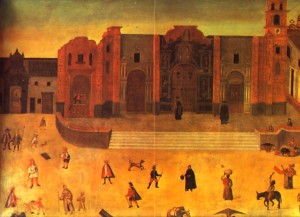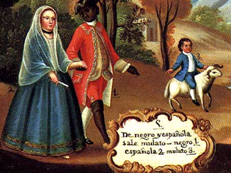A common denominator with different casta paintings is how they treat race as a central aspect of the piece of art. This is due to the definition of casta: a term that describes mixed-race individuals in Spanish America, resulting from unions of Spaniards, Indigenous, and Africans. In many casta paintings, we can see depictions of the ethnic and racial combinations resulting from mestizaje, such as mulatos. Casta paintings offer rich insights on the quotidian practices of colonial individuals, including dress, diet, and household practices; this is information that archaeologists desire. Thus, they’re not only beautiful pieces of art but more than that, they represent historical data.
However, (as we see with Lieutenant Nun) there are many stories and experiences that these paintings lack. There are without a doubt some stories that these paintings fail to capture, which can only be captured with words on a piece of paper. These paintings represent a static image of a supposedly highly structured and regulated colonial world that was imposed on colonial peoples through their bodies. I’m interested in the moments where visual and archaeological pieces of evidence provide different stories. These paintings are used to explore how the imagined, ordered world depicted in casta paintings meshed with daily life in colonial communities. But, what happens when historical documents, and material culture trump the reality that is portrayed in the painting?
When we use paintings as historical data, there are many positives. For example, (1) it shows a visual record of a particular moment in time, (2) it conveys a variety of details about people, places, objects, and events, and (3) it portrays information about everyday life and behaviour that is best communicated in visual terms (hair and clothing styles, interior design). On the other hand, paintings or images, in general, can also portray a tainted illustration of the event since the relationship of the painter to his or her subject is not always clear. One example could be that the emotions and thoughts of those involved are not evident. So, what does this mean?
This means that when we study casta paintings, it’s important to study them in conjunction with other historical data. This is due to the fact that information from paintings is often suggestive rather than definitive; we must pair paintings with other evidence such as documents and oral histories, to determine if the information is unusual or part of a larger pattern.
So, that ends my investigation for this week, and here I propose my question for the class:
What are the limitations of using a painting as a historical source?


